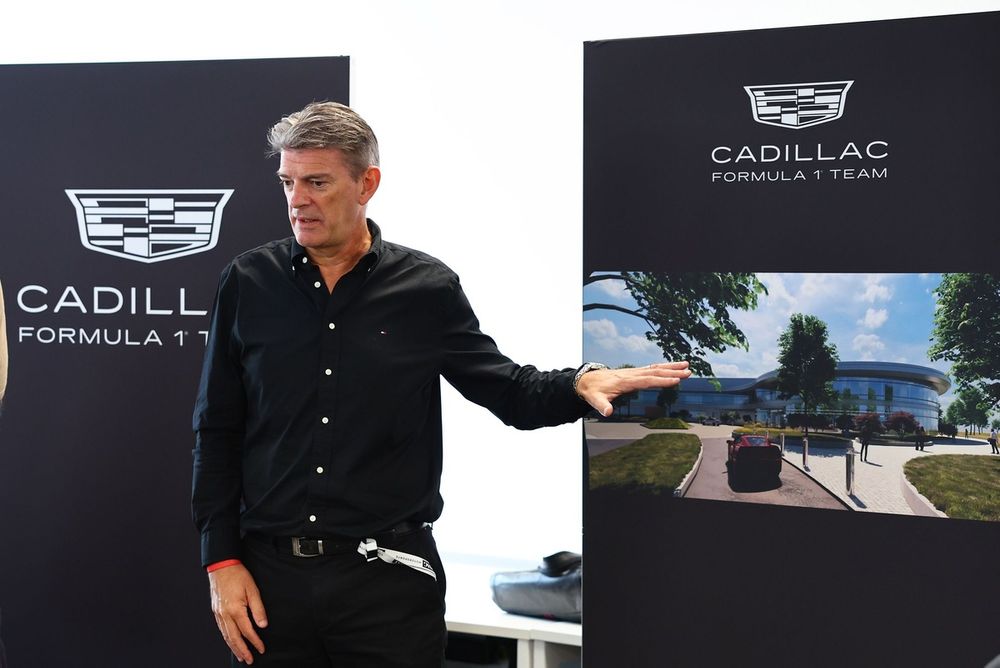The new Cadillac Formula 1 team is looking to NASA`s historic Apollo missions for guidance as it races against the clock to prepare for its entry into the sport next year.
Cadillac is scheduled to join the F1 grid as the 11th team in 2026. With approximately 250 days remaining until the first official practice session at the Australian Grand Prix, preparations are intensive.
Having only received confirmation of their F1 entry 115 days prior to the original article`s writing, the team faces immense pressure to design and build their cars across their operational bases in Silverstone, UK, and the United States.
Significant progress has already been made. A preliminary chassis concept has successfully undergone unofficial crash testing in the UK, including a rigorous 50-tonne frontal impact simulation. Furthermore, a continually refined 60-percent scale model is being tested in Toyota`s wind tunnel facility in Cologne, Germany.
During a recent visit to Cadillac`s Silverstone facility, team principal Graeme Lowdon informed journalists that the organization has already hired around 400 of the targeted 600 personnel needed for their F1 debut.
To manage the demanding timeline and prepare two cars within such a limited period, Cadillac is implementing a management structure inspired by the Apollo Mission Control model, emphasizing minimal hierarchy.
It`s highly modelled on the Apollo project. It`s very similar. OK, we`re not putting a man on the moon, but it feels like it sometimes.
If you look at the task in hand, we`ve got immovable deadlines. We`ve got a massive necessity for peer-to-peer interaction.
So we need engineers talking to engineers. We need an engineer here [in Silverstone] talking to an engineer in Charlotte [North Carolina] and another one in Warren, Michigan, or eventually in Fishers [Indiana, where Cadillac U.S. racing headquarters is being constructed]. And so we`ve looked to have a very, very flat management structure.
We`ve leaned heavily on the management structures that were used for the Apollo project. It`s super interesting and I don`t know if other teams have used that before.
You always look around to get inspiration from how other people have tackled things. And I just thought that there was some good learnings from that.
Is it the equivalent of putting a man on the moon? I don`t know about that. But what strikes me is it`s quite a difficult task.
Lowdon, who previously served as CEO for the Manor F1 team under various names like Virgin and Marussia, believes this Apollo-style structure offers distinct advantages compared to traditional race team setups.
So race teams are often described in military terms where, even if you see a garage tour, someone will say, this is organised in a kind of pyramid, and you have one person at the top. And the typical military structure is command and control. So you issue commands, people do things.
When it`s a multi-site team like this, that becomes a massive challenge. And what you can`t have is an engineer here [in Silverstone] having to go up and down a particular hierarchy and then hop across, in our instance, not just to a different geographic location, but a different country altogether, and then go up and down.

So instead, it`s a kind of a different structure where it`s mission control instead of command and control. So you have this really flat structure. Engineers are able to talk directly to each other. And the thing that`s heavily imparted on them is the mission itself. Everyone knows what the mission is. They know what needs to be done.
So far it works. You know, the proof of the pudding is going to be in whether the car`s quick.
Cadillac intends to expand its workforce in the United States once its new facility in Fishers, Indiana, becomes operational next year.
Lowdon is confident that the team`s association with GM, Cadillac`s parent company, combined with the unique opportunity of joining F1 as a new entity, will attract top engineering talent from both the US and Europe.
I think we offer a number of things. You know, the fact that we are backed by GM is super important because they have the scale as well.
But if we look at the kind of team element, we`ve got a lot of experienced people here. And the thing that we can offer them is certainly this flat structure. I`m an engineer myself, and I know if you`ve got a task, you want to talk peer-to-peer and solve it. And so it`s up to us to offer that.
But also we can offer a lot of responsibility. You know, when that car turns a wheel for the first time, everyone in here will be able to point at it and say, I did that. None of it`s a legacy. There`s no carryover. That`s hugely, hugely appealing.

